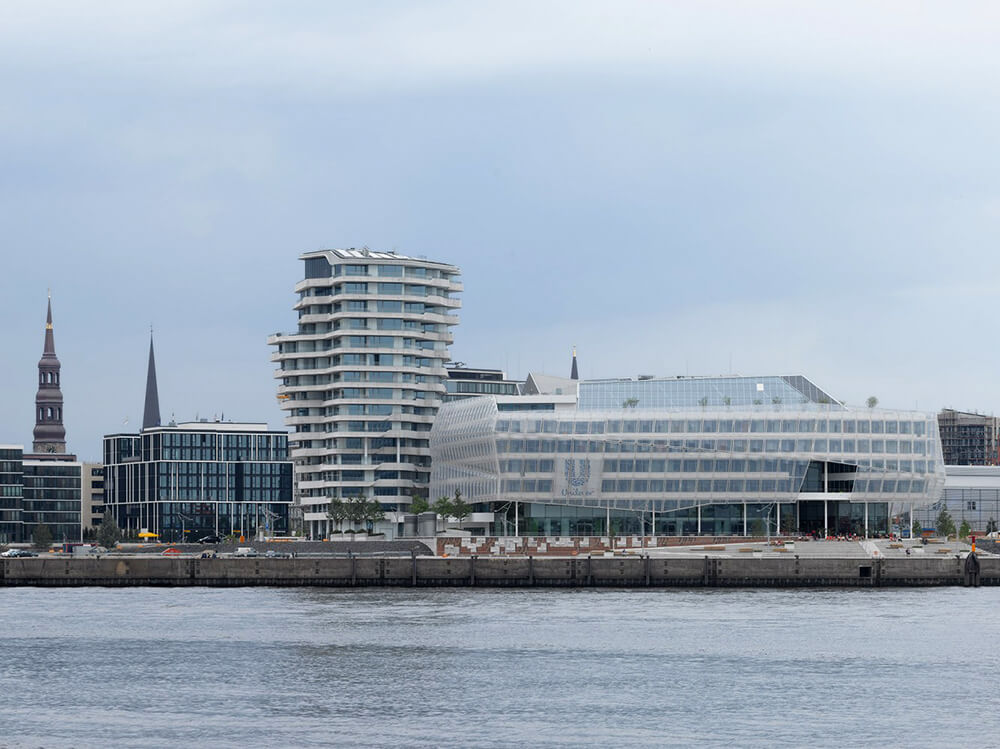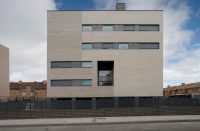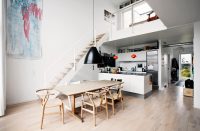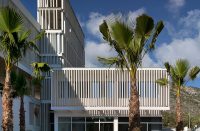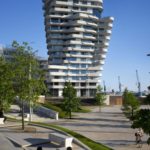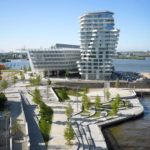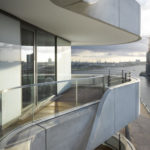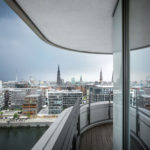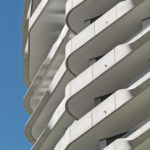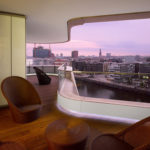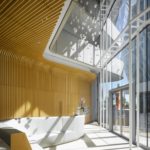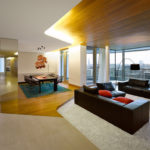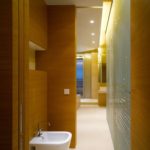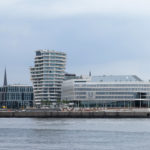Architect(s): Behnisch Architekten
Address: Hübenerstraße 1, HAMBURG, Germany
Latitude/Longitude: 53.539454,9.992813
Photographs: Roland Halbe
The Marco Polo Tower sits on the Elbe, on a prominent position in the HafenCity, right beside the Unilever headquarters, also by Behnisch Architekten. The end of the route from the inner city out to the new attractions, the Cruise Ship Terminal and the Promenade on Strandkai are punctuated by this 55m high tower. This building adds to Hamburg’s silhouette, having a form form and arrangement that makes it unique and remarkable. All 58 apartments offer spectacular views over the harbour and the city, organized in 17 above ground levels, each turned a few degrees on their axis.
Apartments cover an area of 60 and 340 square metres. The living areas are extended by generous perimeter terraces and balconies out into a soft play of lines, and lend the tower its distinctive image. The possibility of increasing areas by connecting neighbouring apartments offers a high degree of flexibility. The interiors have external variations in appearance, so none of the levels or apartments look like. Residents can choose to live between two room apartments and large penthouses with maisonette characteristics. The design reduces as much as possible load-bearing structural elements and necessary fixed services. This way the residents themselves can decide where they want to sleep, cook, eat, bathe or relax. On entering the apartment one has An uninterrupted view over an open plan living room landscape is what each apartment displays on entering, through generously sized glass panels, to the outside world and Hamburg’s roofscape.
The apartments are sold design-ready. According to each client’s taste, an interior architect helps to design their homes. Natural light and views is emphasized every time with the concept proposed by the Behnisch Architekten for residential spaces.
High-class living accommodation and a holistic ecological building concept are brought together in this tower. The overhanging terraces above are protecting the recessed façades from direct sun so that additional sunshades are not necessary. Heat turns into a cooling system for the apartments with vacuum collectors on the roof, using a heat exchanger. Innovative sound insulated air louvres in the sleeping areas make natural ventilation possible without increased noise pollution from outside.

